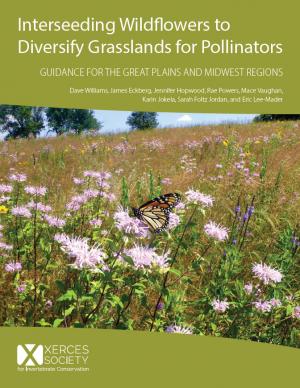
There are tens of millions of acres of grasslands in the United States, including grass-dominated stands enrolled in the Conservation Reserve Program (CRP) and other conservation set-aside programs. These grasslands range from diverse stands of native grasses and wildflowers to dense stands of non-native pasture grasses with few to no wildflowers. Native bees, honey bees, monarch butterflies, and other pollinators important to our ecosystems and agriculture need grassland wildflowers to survive. The recent declines of these pollinators have elevated the urgency to diversify stands dominated by grasses or weeds by incorporating wildflowers. Yet introducing wildflowers into low diversity sites with highly competitive stands of vegetation and managing stands so wildflowers can persist over time is a challenge.
Land managers and land owners can bring wildflowers back to low diversity, established grass stands through a process known as interseeding (also referred to as overseeding). Interseeding involves suppression of grasses and/or weeds using grazing, mowing, haying, prescribed burning, chemical control, disking, or a combination of these techniques prior to seeding, and again after seeding, to maximize wildflower establishment and persistence. Thoughtful selection of wildflower species that are most likely to take hold in the competitive environment of a grass-dominated planting and that are appropriate for the site is also required. Interseeding is an option for Mid-Contract Management required of CRP plantings, with cost-share assistance available. This publication provides guidelines and specific strategies for interseeding wildflowers into established grasslands and identifies species of wildflowers most likely to establish and persist in the Midwest and Great Plains.
Findings included here are the result of a review of published restoration research primarily from the Midwest and Great Plains states, and feedback obtained directly from current land managers, researchers, and land owners (hereafter referred to as practitioners) with expertise in this field who participated in an online survey and follow up conversations. Practitioners have experience interseeding in Minnesota, Iowa, North Dakota, Nebraska, Missouri, Kansas, and Illinois. The following recommendations are most relevant to Midwest and Great Plains states but may be adapted or applied in other regions as well.
